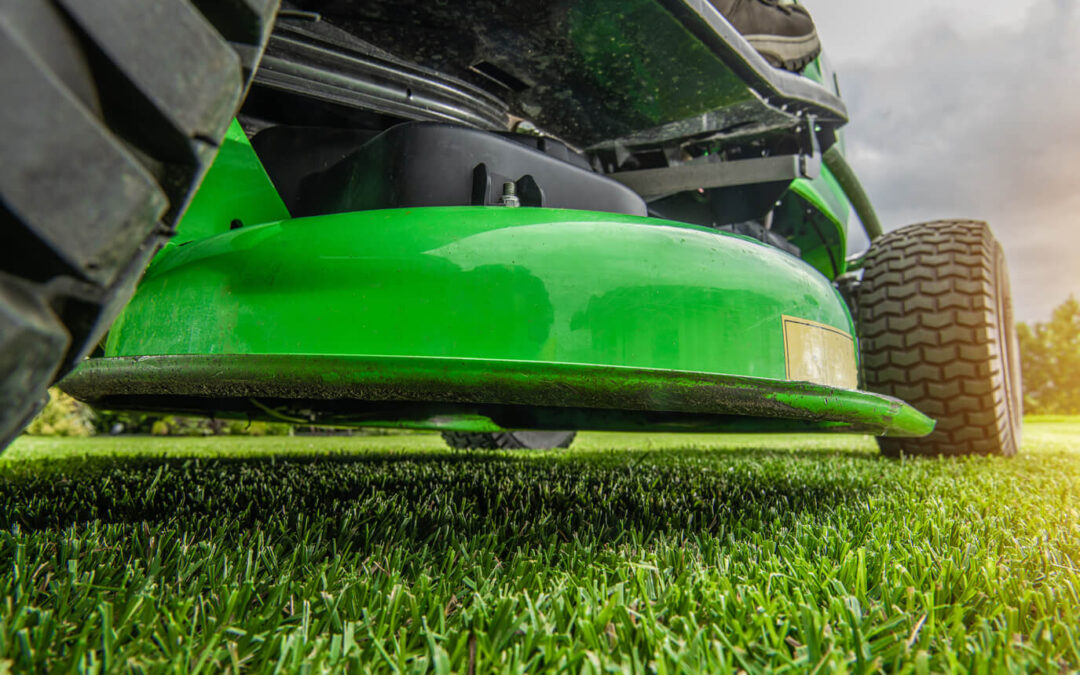If you have a lawnmower, you know that the blades can wear out over time. You will need to replace them when this happens to ensure that your mower remains in good working order. However, choosing the right replacement lawn mower blades can be challenging if you are unsure what to look for.
With that in mind, here are our top 11 tips on choosing the best lawn mower blades for your mower.
1. Choose the Right Material
The first thing you need to consider is what kind of material you want when choosing the best lawn mower blades. There are many different materials available for this type of equipment, including aluminum alloy steel, carbon steel, and stainless steel. Each material has its pros and cons regarding durability and performance.
When choosing between these three options, consider how often you will use your mower blades and how often they need replacing before making a final decision. The most common material used today is carbon steel because it offers high strength at an affordable price point while still being easy to maintain.
2. Choose the Right Blade Length
The length of your lawnmower’s blade will determine how well it cuts grass and other materials such as leaves or sticks. If you have a shorter lawnmower, you will need shorter blades so that they do not get caught up on anything while cutting through the grass. Longer lawnmowers require longer blades to cut deeper into thicker patches without getting stuck or hitting an obstruction along their path through thick grasses or weeds!
3. Get the Correct Center Hole Size
Most lawnmowers have center hole sizes between 2 and 4 inches. Some mowers have 1/2 inch or 5/8 inch holes. You need to ensure that you get the correct size for your mower. If the center hole is too small, you will not be able to fit the blade on your mower. If it is too large, your blade will not be balanced correctly, which means that it will not cut as well as it should and may even cause damage to your engine components.
4. Choose the Right Types of Lawnmower Blades
There are different lawnmower blades, so it’s no surprise that many homeowners don’t know which one is best for them. Each one serves a different purpose, and some are better than others at certain jobs. Here are the five different types of lawnmower blades:
- Standard or medium-lift blade: These blades are the most common type of lawnmower blade, and they’re designed to lift grass clippings from the ground, cut them, and send them out behind the mower.
- Mulching blade: This blade is shaped to keep clippings inside the cutting deck for longer. This gives them more time to be cut by the blade repeatedly until they’re small enough to be hidden among the grass on your lawn.
- Low-lift blade: This is a standard or medium-lift blade, but it’s designed to lift grass clippings only a short distance above the ground before cutting them off and sending them out behind your mower.
- Gator blades: Gator blades have a curved design that helps increase suction in the cutting deck so that you don’t end up with uncut grass sticking up from your neat rows. They also help to reduce noise when you start up your mower.
- High-lift blade: This type of blade operates like a fan, pushing air down into the cutting deck and then lifting it back up out of the deck along with grass clippings so they can be blown out.
5. Consider the Dimension of the Air Lift
When choosing blades for your mower, you’ll need to consider the height specified in inches. This height is known as the airlift. You can find this number by measuring from the top of the blade where it meets the center hole to its lowest point. You can also measure from where it meets the center hole to its highest point. A standard airlift is 2-1/2 inches, but these can vary depending on brand and model.
6. Choose the Right Number of Holes
Before buying any lawnmower blades, you will need to determine how many holes each blade needs. Some lawnmowers have more than one blade, so more than one hole in each blade. They also tend to be very expensive because of this feature, so it’s essential to ensure that you’re getting the best deal possible when buying them.
You should also check if your mower has an automatic or manual transmission. If it has an automatic transmission, then it is likely that you don’t need as many holes as a manual transmission would require. This is because the automatic transmission will move slower than a manual transmission and, therefore, will not require as many holes.
7. Choose Adaptable Blades for Versatility
Most modern lawnmowers can use at least two different types of blades. These are standard blades and mulching blades. Mulching blades are helpful because they cut grass into very small pieces, which decompose quickly into fine material which fertilizes the lawn. On the other hand, standard blades produce larger pieces of grass that may need to be raked up after mowing. Standard blades will also generally give a neater finish to lawns that have been recently cut.
8. Know Your Budget
Lawn Mower blades come in various styles and brands, so consider your budget before you purchase any blades. If you have a larger budget, you might want to consider purchasing several sets of blades so that if one set gets dull or damaged, you always have another set to use. If you have a smaller budget, it might be best to purchase a set of mower blades and then sharpen them if they get dull instead of constantly buying new ones.
9. Get Sharp Blades
You must purchase sharp blades for your mower to enjoy a smooth cut every time. Sharp blades will result in cleaner cuts without leaving any jagged edges or frayed pieces. This also helps reduce the risk of disease development, which can cause the grass to turn brown and die off. Dull blades can also cause scalping when the soil is visible beneath the grass. Scalping is caused by the mower’s blade not being able to slice through thick grass effectively.
10. Consider Blade Thickness
There are a few things to consider when it comes to blade thickness. The first is how thick the metal is. The thicker the metal, the better it holds its edge and resists damage while cutting over rough or rocky ground. This is particularly useful if you have a lot of rocks in your yard, as they can hit and nick the blade while you’re working and eventually wear it down so much that it will need to be replaced.
Another thing to consider when it comes to blade thickness is how far the blade extends past the edge of the deck. If your lawnmower has a shorter deck, look for blades that have more width and length so they can catch more grass at once.
11. Match the Direction of Rotation
It is important that you match the direction of rotation when choosing a new lawnmower blade for your mower. If you choose a blade with the wrong rotation, it will not work properly and may even damage your lawnmower permanently. The best way to determine the correct rotation is to look at the old blade on your mower and see how it spins when you turn on the engine.
Final Word
Lawnmower blades are one of the most critical components of your mower. The right blade can make a difference in how well a mower performs and how long it lasts. But with so many options available, choosing the right one for your mower can be difficult. There are several factors to consider when choosing the best lawn mower blades, from blade materials to blade length. We’ve outlined some key things to look for and we hope this will help you when selecting a blade for your mower.

